Contents
The alluring beaches, exotic locales, and year-round sunshine of Jamaica inspired Ian Fleming, the creator of James Bond. The prolific author lived on the island’s north shore in the small town of Oracabessa while he wrote the first dozen James Bond novels.
It was on this Caribbean island in 1962 that the first film, in one of the longest running movie franchises of all time, began with Sean Connery as the dapper secret agent in Dr. No. The movie’s success was solidified when Honey Ryder, portrayed by Ursula Andress, emerged from the waves on the fictional island of Crab Key. Jamaica, in all its tropical glory, sets a beautiful stage for a riveting story.
A decade later, the island took center stage as San Monique in Live and Let Die. Featuring the debut of Roger Moore as the titular character, Bond outsmarts crocodiles and goons, saving his lover, Solitaire, from the clutches of the evil Dr. Kananga. In 2021’s No Time to Die, the island was finally center stage in its own right, when the iconic MI6 agent settles down to retire in a small waterfront cabin in Jamaica.
Whether you are an ardent Bond fan, or someone who enjoys visiting places popularized by film, Jamaica is sure to please you. Fancy resorts, cascading waterfalls, intriguing caves, and turquoise waters lapping onto stunning shores await your visit. While you may not find 007 here, you can certainly have your own adventures.
Jamaica is the third largest Caribbean island and is known as the birthplace of reggae. Bob Marley, one of the musical genre’s pioneers, has a surprising connection to Ian Fleming and Goldeneye, his home on the north shore. Keep reading to find out all about the top Bond filming locations in Jamaica.
1. Laughing Waters Beach
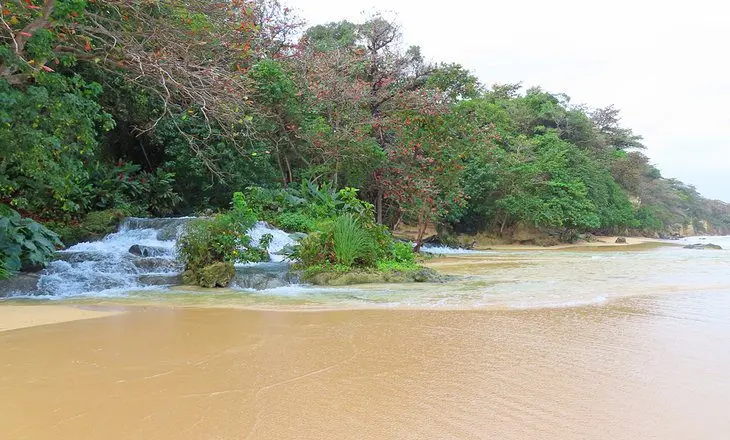
In Dr. No, Bond and Honey Ryder meet for the first time on a glorious beach on Crab Key, where sandbanks next to a waterfall provide them shelter from the island’s henchmen. This fictional island beach in reality is Laughing Waters, a 10-minute drive from the center of Ocho Rios and a short distance from one of the area’s popular tourist attractions: Dunn’s River Falls.
Ian Fleming himself suggested the beach to the movie producers, and Honey Ryder’s pivotal introduction scene catapulted the film’s popularity. Laughing Waters, often referred to as Crab Key Beach, looks the same as it did back in the 1960s, thanks to its protection by the government.
Jamaica’s Urban Development Corporation now has authority over the property, and visitors wishing to recreate the iconic scene can obtain permission to visit, or rent the beach and on-site villas for weddings and other special events.
2. Swamp Safari
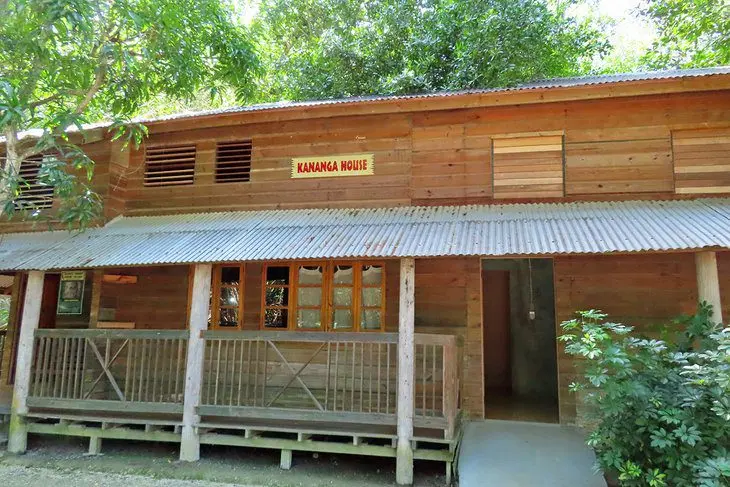
Live and Let Die marked Roger Moore’s Bond debut and brought the filming to the island where it all started. One of its most memorable scenes involves Bond leaping across the backs of crocodiles and setting fire to the lab in a Louisiana crocodile farm. The scene was actually shot in Jamaica at Swamp Safari. Located in Falmouth, an hour from Montego Bay, the gates still feature the “Trespassers Will Be Eaten” sign, as seen in the film.
Swamp Safari sits on two acres of the Trelawny mangrove and operates as a sanctuary for crocodiles displaced by overdevelopment. There are 80 crocs hanging out in the muddy waters and basking in the sunshine.
The small concrete mound on which Bond finds himself surrounded by crocodiles still exists; it is now connected by a bridge, and visitors are allowed to go with a guide. A stuntman named Ross Kananga, who owned the original crocodile farm, performed the daring act of jumping over the crocodiles, although it took him five tries and a few near misses to get it just right. The film’s villain, Dr. Kananga, was named after the daredevil as a nod to his bravery.
Across from the croc-infested pond sits Kananga House, which was rebuilt after Bond famously set it on fire. Named in memory of the late stuntman (who tragically passed away a few years after filming), the house is open to visitors and shows a video clip of the scene inside. Swamp Safari welcomes guests and offers tours; visitors can get an up-close look at crocodiles, reptiles, and indigenous birds.
3. Port Antonio
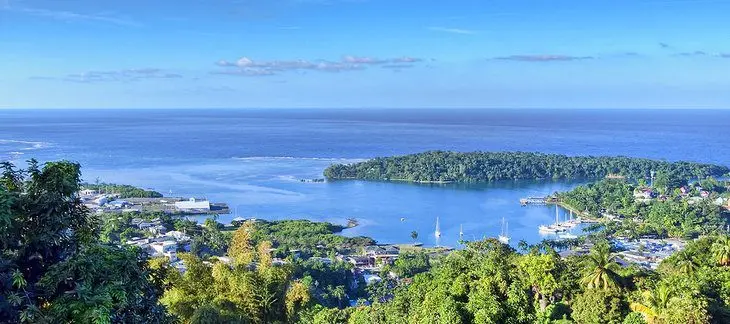
No longer disguised as another Caribbean location, Jamaica takes center stage in No Time to Die, when Port Antonio becomes Bond’s new home. We first see the town as Bond is driving his Jeep past a waterside ball field and into the city through its narrow streets and brightly painted storefronts, including Musgrave Market. He stops in Market Square, the sign for the junction of West Street and Williams clearly behind him. A local souvenir shop and the square’s centerpiece, a white memorial erected to commemorate Portland Parish’s citizens lost in WWI and WWII, are also prominently featured.
Bond fans will also want to seek out the modest Piggy’s Jerk Centre on Foreshore Road, a restaurant that was not only shown in a nighttime scene but was also one of Daniel Craig’s favorite local eateries. The building tourists see today is not the same as the one the actor frequented, yet it is even more precious to Bond fans than the original. The small takeout stand was destroyed in a fire not long after filming, but Craig and the crew came to the rescue, raising and donating the funds needed to rebuild and open back up for business. Rumor has it that Craig has kept in touch with the owner, Eustas Lindsay, who is said to have great sightseeing advice in addition to his great food.
4. Dunn’s River Falls
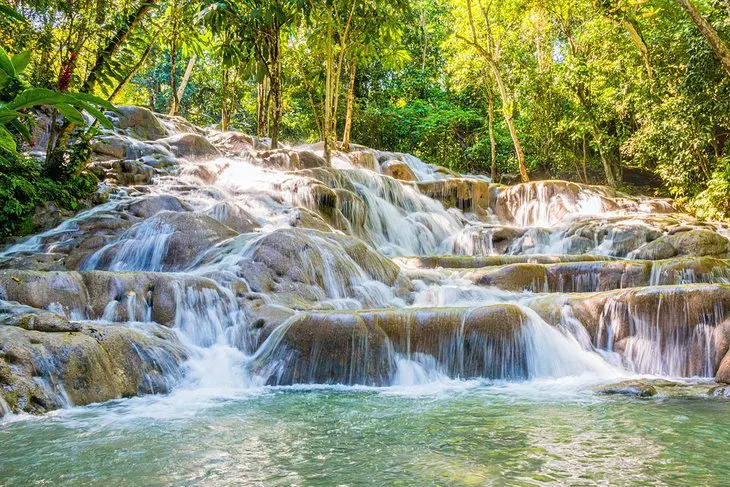
While Laughing Waters remained nearly unchanged over the decades, Dunn’s River Falls has transformed quite a bit since the day Bond, Ryder, and Quarrel washed themselves in the pools of the terraced waterfalls.
As one of the most popular attractions in Jamaica, the falls see thousands of visitors enjoying its tiered cascades, which span over 600 feet across. If you visit when there are no cruise ships docked in port, you might find some space to climb to the top of the falls without many people around.
5. San San Bay
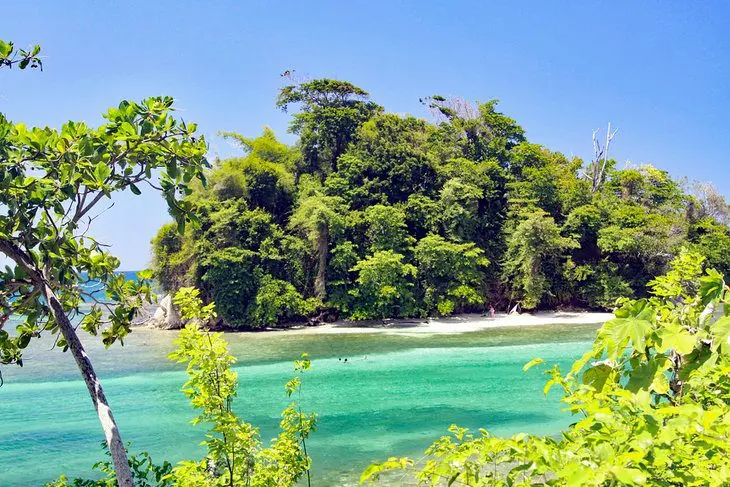
In the 2021 film No Time to Die, James Bond comes full circle, returning to Jamaica not only as a filming location but as the spy’s home. The retired British Secret Service agent has settled into a quiet life, living in a cabin on the shores of a crystal-blue bay. In real-life, the cabin was purpose-built on a stretch of private beach called Coco Walk, inaccessible by roads. The best way to see this spot is the same way the production team got in and out: by boat.
Unfortunately, the cabin was destroyed after filming wrapped, but fans can still admire the scenery of this idyllic little slice of Bond’s brief retirement from the water.
Fans who want to stay where actor Daniel Craig spent his nights can book their stay at the Geejam’s Cocosan Villa, a private six-bedroom villa that has every luxury you can imagine. Tourists may want to opt for a standard room at the Geejam , since the villa runs around $4,500 per night.
6. Half Moon

Half Moon luxury resort in Montego Bay has been renovated over the years, but this beautiful property sitting on a crescent-shaped beach was where Roger Moore’s Bond meets and spends the night with Gloria Hendry’s Rosie Carver in Live and Let Die.
Cottage No. 10 was the setting of his hotel room on the fictitious voodoo island of San Monique. Here, the famous British spy fights a venomous snake, comforts Carver, and enjoys a lovely breakfast on the veranda the following morning.
Visitors can rent the Bond villa at Half Moon or opt for any other well-appointed villa along the two-mile beach. The resort is a 15-minute drive from Montego Bay’s Sangster International Airport.
7. Rose Hall Great House
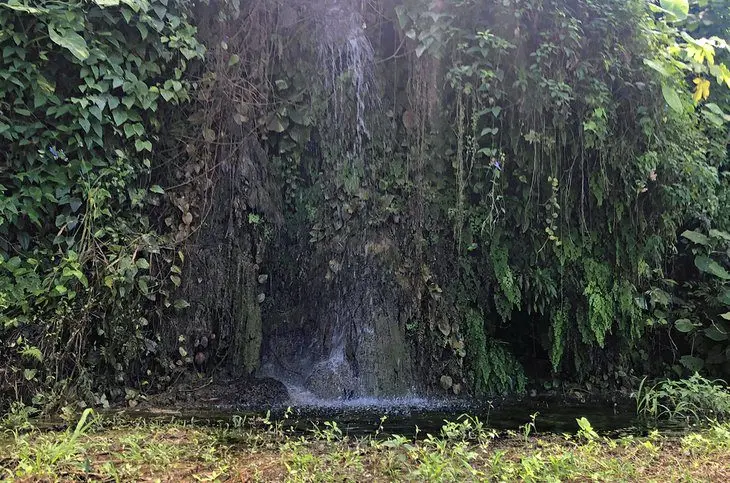
Annie Palmer, known as the White Witch, is believed to haunt the 18th-century Rose Hall Great House, a Jamaican Georgian-style mansion on the North coast near Montego Bay. She lived there with her husband, John Palmer, in the early 1800s.
According to folklore, Annie killed her spouse and two subsequent husbands, as well as a few male slaves working on the plantation, before being violently murdered. If that wasn’t enough, it was also once owned by Johnny Cash.
It was here, on the grounds of the Rose Hall Plantation, that a crucial scene in Live and Let Die took place. After Bond frees Solitaire, they make their escape through a poppy field and graveyard. This makeshift graveyard with a small shack and nearby field were brought to life for the film on the hills behind the house.
No sign of these sets remain on the grounds, which are now part of the Cinnamon Hill Golf Course. Those hitting greens here will not only enjoy panoramic sea views, but can sneak away to the gentle waterfall featured in the scene (near the 15th green) as a gorgeous backdrop for the main characters.
8. Boundbrook Wharf

Boundbook Wharf in Port Antonio’s West Harbour makes a debut in No Time to Die, costumed as a Cuban military base that is the site of a nighttime action scene. The area was transformed to resemble Cuba by a local artist, who painted murals of Castro and other Cuban political figures. Although there is now a new coat of paint over the artwork, the set design lives on underneath as a covert mark left in the spy’s wake.
9. Green Grotto Caves
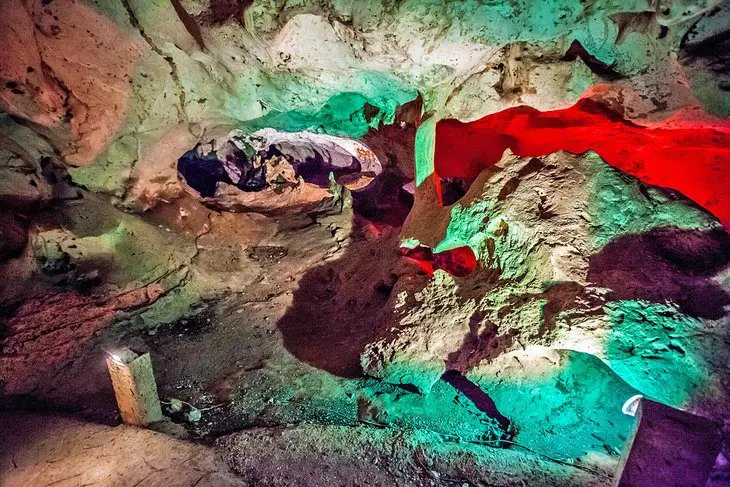
Although Live and Let Die‘s unforgettable final fight scene was filmed in a UK studio, the setting was inspired by Green Grotto Caves. Some of the scenes of Moore and Jane Seymour trying to evade Kanaga’s men were filmed inside the massive cavern.
The expansive cave system that makes up Green Grotto Caves is located equidistant from Montego Bay and Ocho Rios. Here, you can walk under the stalactites, past the eerie exposed roots of strangler trees, through a labyrinth of chambers to get to Dr. Kanaga’s underground lair and subterranean lake. The cave is believed to be at least 28 million years old and is considered among the largest walkthrough caves on the island.
10. Couples Sans Souci
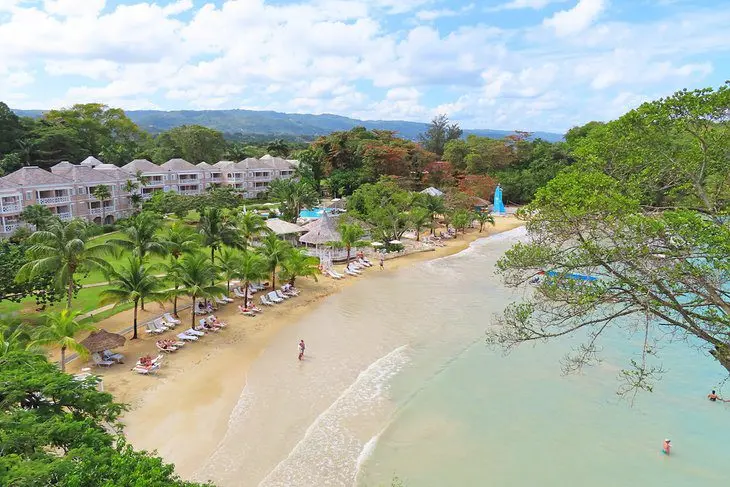
Couples Sans Souci, formerly Sans Souci Hotel, in Ocho Rios, appears briefly in Live and Let Die. While it is only seen in some exterior shots of Bond’s hotel room on San Monique, it left an indelible mark on Roger Moore. He spent his time during filming in one of the resort’s spacious suites (numbered D-20), which has since been turned into the Roger Moore Suite.
A quick look inside Couples San Souci explains why he fell in love: the balcony overlooks a pristine private beach and the mountains beyond. This all-inclusive, couples-only five-star resort offers spacious rooms, restaurants, swimming pools, fitness and sports facilities, and a spa.
11. Goldeneye
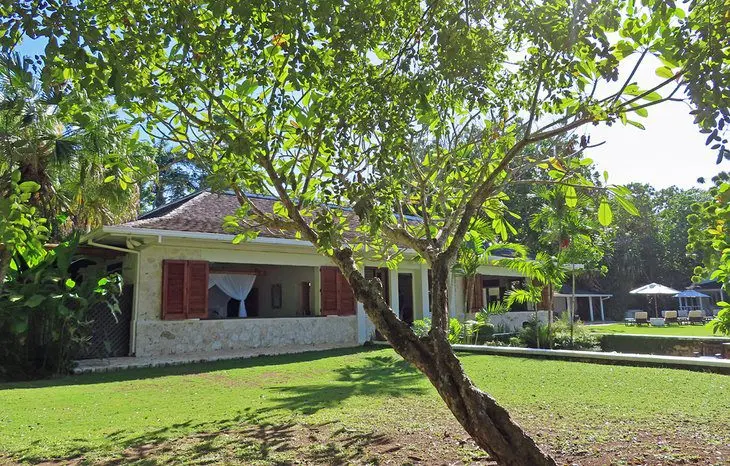
Starting from the early 1950s, Fleming spent winters in a house he designed in the town of Oracabessa on Jamaica’s north shore. The house, named Goldeneye, wasn’t extravagant; in fact, it was just one floor and simple, but it was surrounded by banana and sea grape trees, with stairs leading down to a small beach.
Fleming spent many days snorkeling there with his wife, Ann. It was here, in a corner of a room with large open windows, he wrote all 12 of the James Bond novels. A sunken garden built to Fleming’s specific desires leads from the front door to the edge of the cliff overlooking the sea.
During the filming of Dr. No, Fleming entertained the stars at Goldeneye. In the 1970s, reggae legend Bob Marley considered purchasing Goldeneye, but instead opted for a home in Kingston.
Today, the house and its surrounding gardens are part of the Fleming Villa of the GoldenEye resort . Upon entering, an airy, richly appointed living room, with shelves full of Bond books and memorabilia, greets visitors. A side room, featuring photos of Ursula Andress from her iconic scene in the first movie on turquoise colored walls, transports you back in time.
The Goldeneye resort also offers beach huts and lakeside cottages for fans and nature lovers to immerse themselves in the pristine beauty that inspired many scenes in the films. A gazebo Fleming used to write in now serves as a fine-dining restaurant, and the cottages have access to salt and freshwater infinity pools.
12. Port Maria
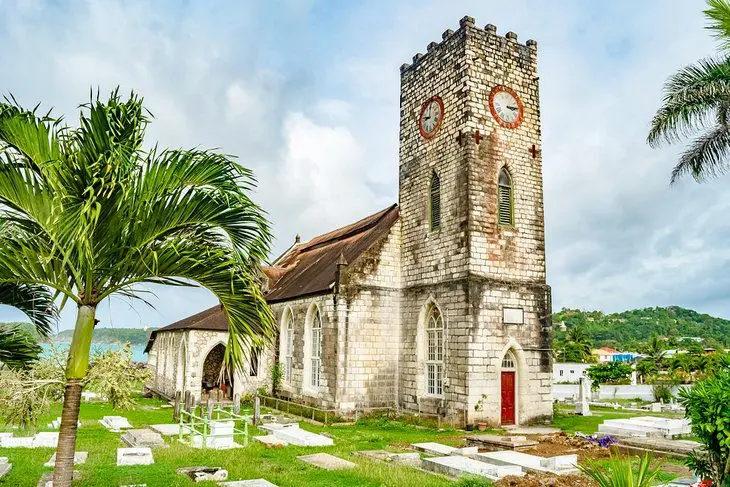
A short drive from Goldeneye is the quaint town of Port Maria. It was at the quaint St. Mary Parish Church, overlooking the Caribbean Sea and Cabarita island in Port Maria, where Fleming tied the knot with the love of his life, in 1952.
Before Kingston became the island’s commercial hub, Port Maria was the center of trading in Jamaica. The town today, with a handful of buildings including the courthouse where Fleming and Ann got their wedding license, remains a sleepy outpost.
The little church, built in 1861, shows its age, but visitors can admire its limestone blocks and views of palm trees and crashing waves. The same year Fleming got married, he wrote his first Bond novel, Casino Royale, published in 1953. Cabarita Island serves as the model in Live and Let Die for Mr. Big’s “Isle of Surprise,” where he conducts his smuggling business.
13. James Bond Beach
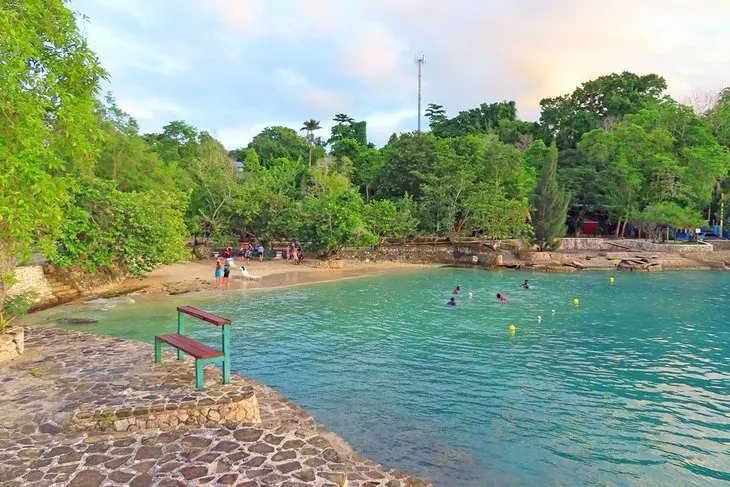
Next to the Goldeneye estate lies the small James Bond Beach. For a nominal entrance fee, you can visit this secluded stretch of golden sand with a stunning backdrop of the St. Mary’s Mountains. Though Fleming had his own private seashore, he often frequented this beach during his time in Jamaica.
Bring a chair, umbrella, and relax to the tunes drifting from the nearby Moonraker Jamaican Restaurant. On-site amenities include changing rooms and showers. Don’t be surprised if you have to share the tropical waters with other beachgoers looking for a refreshing dip during the high season.










